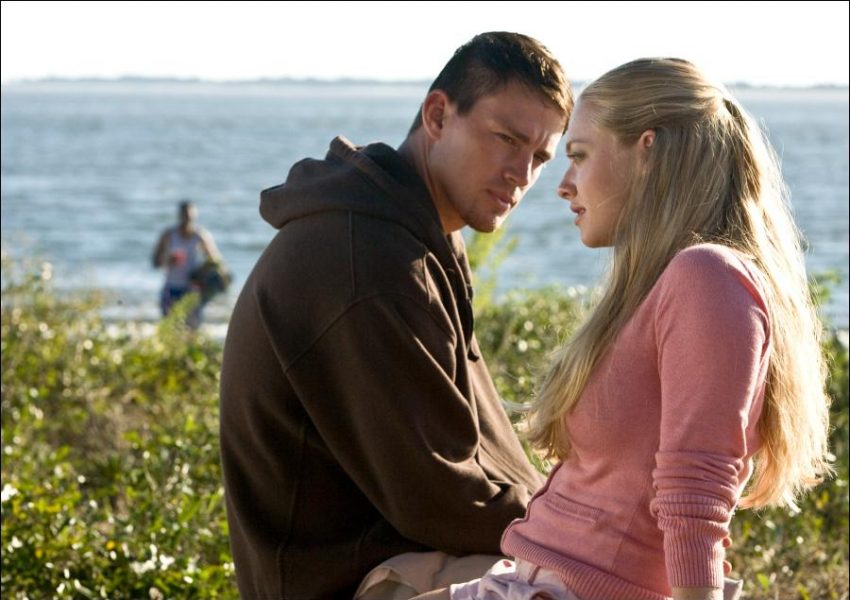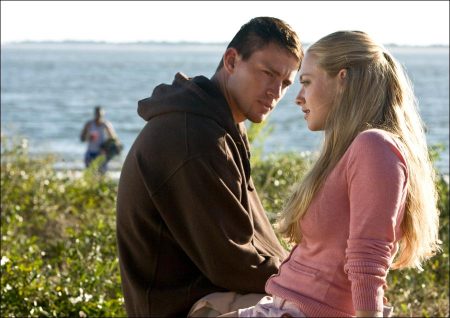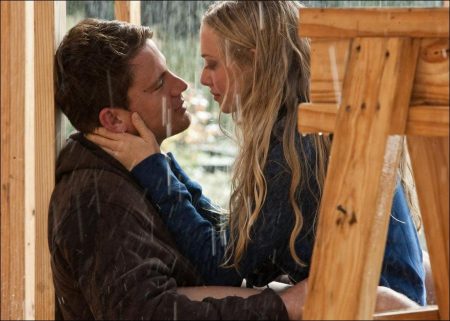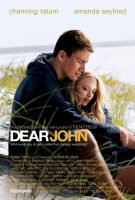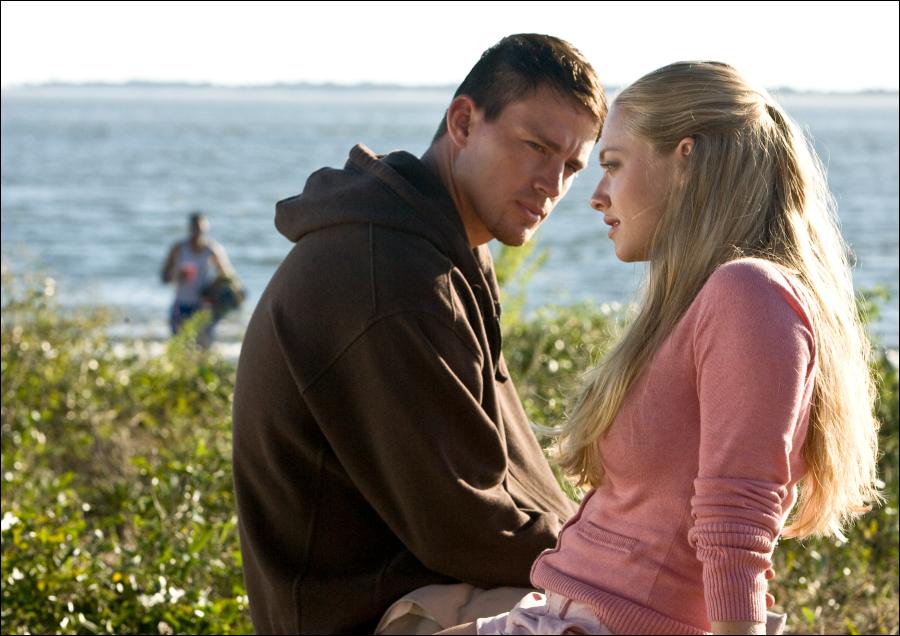With the Crowleys on board, a collaborative effort to bring the story to the screen was about to begin. Turning this family’s journey and The Cure into a two-hour feature presented a delicate balancing act. The timeline of events, which encompassed several years, had to be condensed and yet the story still needed to engage audiences in the arduous, groundbreaking scientific process that saved the Crowley children. The task would indeed be both challenging and rewarding. The producers met with Academy Award-nominated screenwriter Robert Nelson Jacobs and quickly realized they had found the right person to adapt the story.
“He had written Chocolat,” notes Santos Shamberg. “He’s a very sensitive writer. The process of turning Geeta’s book and the Crowleys’ story into a movie would be quite a long process. Robert came up with a good script within a year, which is very lucky.”
“There are several things that moved me creatively and emotionally to tell this story,” says Jacobs. “I was very drawn in by this family. They deal with adversity with a lot of grace and humor. I think that’s an important story to tell.”
Jacobs found Anand’s book to be an invaluable resource and the journalist/author to be “extremely generous with sharing her research.” But Jacobs also immersed himself in his own extensive research of the family.
Though the film’s main emphasis was to capture the family’s extraordinary journey to overcome the odds, Jacobs also felt it important to reinforce that this was a family in a day-to-day routine.
As Jacobs perceives, “The triumph of this family would only be magnified by also showing the chinks in the armor, the same vulnerabilities and frailties and flaws that any other family has. All parents need to make decisions about what’s in the best interest of their kids. For the Crowleys these were literally life and death decisions.”
Compressing the story’s timeline of events included assessing how to best represent the numerous people who assisted John in his development of the drug that would save his children. “There were many people who helped John along the way, from scientists to business men. And there were a number of doctors for whom John raised money,” explains Jacobs. “We composited all of these people into one character – Dr. Robert Stonehill. John is very ‘straight ahead,’ and Dr. Stonehill marches to the beat of his own drum. I realized that putting the two of them together would make sparks fly. It would create a lot of dramatic tension.”
Ford (who both stars and serves as executive producer on the film) saw Dr. Stonehill as an intriguing opportunity both in storytelling and as an actor. “He’s a composite of people who played different parts in the Crowleys’ story but, for me, he’s also a composite of things I’ve observed in my research. He represents aspects of a scientist, and also aspects of a loner, an iconoclast,” explains Ford. “And his relationship with John Crowley is an interesting kind of relationship for me as an actor. Their relationship is sometimes contentious, not at all smooth, but there are also moments of co-joined purpose. It’s a complicated dynamic.”
“It’s two men with a mission; one to save his family, the other to prove he’s right,” elaborates Shamberg. “Two men against the system; I don’t think you can go wrong when you have underdogs fighting for something right. And, given the current health care debate, the public seems particularly primed to root for characters who take control of important issues, such as this one, that affect the fate of their loved ones.”
It is important to understand ‘orphan drugs’ to understand how the work of these two characters progresses. The Orphan Drug Act of 1983 was passed to encourage the development of drugs that have a small market due to their treatment of ‘orphan diseases’ (defined in the U.S. as a disease that (a) affects less than 200,000 persons in the U.S. or (b) affects more than 200,000 persons in the U.S. but for which there is no reasonable expectation that the cost of developing and making available in the U.S. a drug for such disease or condition will be recovered from sales in the U.S. of such drug*). Under this law, companies that develop an ‘orphan drug’ may sell it without competition for 7 years (there are also tax incentives).
Pompe Disease is an ‘orphan disease’ and the drug that John Crowley and Dr. Stonehill develop through the course of this story falls under this ‘orphan drug’ status. The market potential for an ‘orphan drug’ can be enormous because of the general high cost of these drugs per patient (individual yearly treatment can cost hundreds of thousands of dollars a year), which insurance often covers. This explains how John and Dr. Stonehill are able to raise venture capital and ultimately sell out to a larger pharmaceutical company.
To build Stonehill’s character while authenticating the science in the script overall, Ford and Jacobs turned to experts in the field for help and credibility. “I’ve been gratified by the willingness of the science community to help us work out ways to get the story more correct on a scientific level,” says Ford. “In particular, to work out a way of representing the scientific process which is largely practiced in the head.”
Finding ways to give physical form to this cerebral process was necessary to tell the story, yet the scientific dialogue was important both for accuracy and as a window into Stonehill’s character. “When you see Harrison explaining the science, it’s really the subtext that’s important – you see a scientist who is passionate about what he’s doing,” says Jacobs. It was crucial for Ford and Jacobs to really understand the nuances of the science to then simplify the process for the audience’s understanding.
One scientist who was instrumental in this research was Dr. Hung Do who worked with John Crowley from very early on and continues to work with him to this day. The filmmakers spent a considerable amount of time with Do, who consulted on the film from story development through production. He also shed light on what it was that John Crowley brought to the table for the scientific community that upped the level of motivation for a notoriously stoic (albeit by definition) group of individuals. “He made it about much more than research,” says Do. “This was his kids’ lives. That really brought it to a whole other level for us scientists.”
For all of the factual research and timeline compression, the emotional component and spirit of the family was indeed the foundation of this script. Jacobs worked tirelessly to build a screenplay that conveyed both the physical and spiritual journey for all involved.
“You have to give real credit to Bob Jacobs,” says Shamberg. “He took the essence of what was poured into each juncture over years and years, and made it dramatic by compressing timelines and combining characters.”
Years of success as a screenwriter and positive feedback from the filmmakers did little, however, to ease Jacobs’ nerves once it came time to deliver the script to the Crowleys for their read.
“This film is really the first that I’ve written that’s inspired by a true story and a real family,” says Jacobs. “It was important to honor the spirit of that family. So it meant a lot to me when the Crowleys read the script and said ‘Yeah, you had to fictionalize in places, and you had to change the timeline, but we feel like you’ve captured the spirit of our family.’ That was probably the nicest compliment that I’ve ever received as a screenwriter.”
Dear John (2010)
Directed by: Lasse Hallstrom
Starring: Channing Tatum, Amanda Seyfried, Henry Thomas, Richard Jenkins, Keith Robinson, Leslea Fisher, Mary Rachel Dudley, David Andrews, Gavin McCulley, Cullen Moss, William Howard Bowman
Screenplay by: Jamie Linden
Production Design by: Kara Lindstrom
Cinematography by: Terry Stacey
Film Editing by: Kristina Boden
Costume Design by: Dana Campbell, Kathryn Langston
Set Decoration by: Summer Eubanks
Art Direction by: Mark Garner
Music by: Deborah Lurie
MPAA Rating: PG-13 for some sensuality and violence.
Distributed by: Sony ScreenGems
Release Date: February 5, 2010
